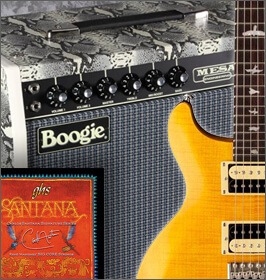After his first three albums (Santana, Abraxas, and Santana III) had been released,Carlos Santana changed direction. Shifting away from the Latin-percussion fueled pop-rock that had been his mainstay, Santana charged full-bore into jazz and fusion, a type of music by which he had been impressed (especially as played by guitarist extraordinaire, John McLaughlin).
It was early in this period that long-time partner and collaborator Gregg Rolie left Santana. Though Santana worked with a number of different keyboard players, he eventually gravitated toward an extended relationship with Tom Coster. Where Rolie’s style was solidly grounded in blues and rock, Coster was much more heavily influenced by jazz, and jazz-related genres.
During their time together, Santana and Coster wrote a number of songs, but the most memorable was the the instrumental, “Europa (Earth’s Cry, Heaven’s Smile)”, considered by many to be Santana’s most beautiful instrumental song. (Also in the running is the lyrical “Samba Pa Ti.”)
Due in great part to Coster’s influence, it is also one of Santana’s most harmonically complex songs — and certainly the most sophisticated, harmonically, of his hits.
Europa Chord Progression
Based in C minor, Europa has a slick chord progression that utilizes a descending cycle of suspensions, and complements perfectly Santana’s accessible melody. The chords for the “A” section are: Bb7sus4 – Bb7 – Ebmaj7 – Abmaj7 – G7sus4 – G7 – Cm. There is an inspired twist just before the “B” section, where the harmony modulates to C major (with a Cmaj7), which is mirrored in the guitar melody. The rest of the song alternates between a more prosaic minor i, iv, and v (Cm, Fm7, Gm7).
Interestingly, the initial version of Europa from Amigos, which was recorded in the studio, was later overshadowed by two much more potent live recordings. Europa on Moonflower (1977) takes the original version up a notch, but the 1993 live version of Europa on Sacred Fire: Live in South America is the ultimate.
Perhaps it was playing the song in concert for 16 years, but Santana really hits his stride on that version. His tone is smooth and powerful, the classic Santana sustain seems to go on forever, and the band pushes the song to a new level. That version of Europa also includes homages to Marvin Gaye’s “I Want You,” and Earth, Wind & Fire’s “Be Ever Wonderful” (and they borrowed it from “Ponta de Areia,” written by Brazilian songwriter Milton Nascimento).
Europa has been covered by other artists (saxophonist Gato Barbieri has a sizzling version on his Caliente album), but will always be remembered as one of Santana’s signature songs.


